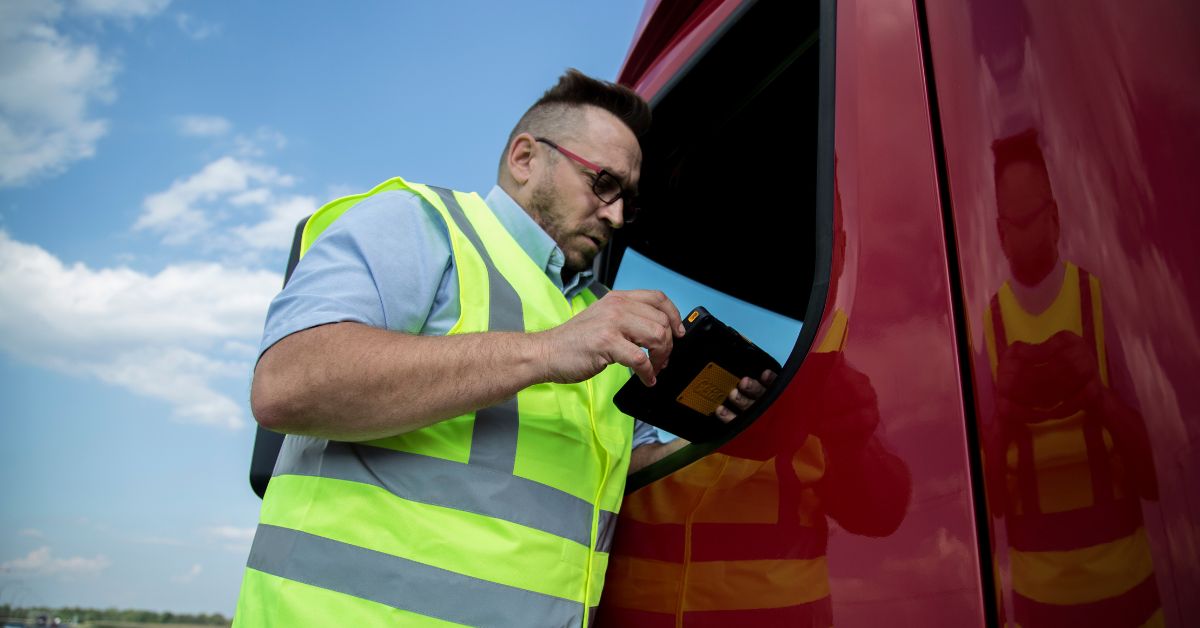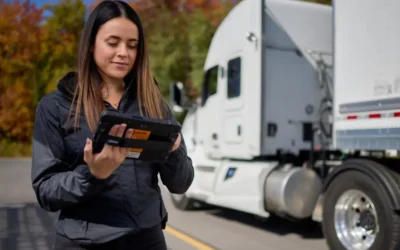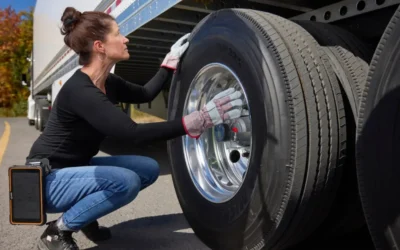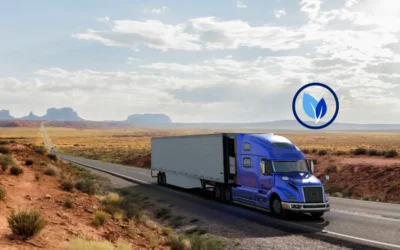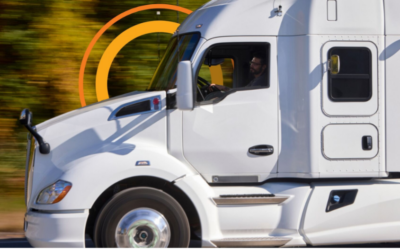Drivers must be ready to successfully pass roadside inspections and trained to produce flawless driver vehicle inspection reports (DVIR). Trucking companies should prepare drivers to fulfill safety and compliance requirements efficiently. Doing so helps keep drivers safe and avoid costly delays and non-compliance issues.
Multiple types of roadside inspections can take place and drivers must be ready for them. Fleets should emphasize safety as the primary goal of inspections and must set a high bar for safety and compliance while empowering drivers through training, tools, and team support.
Watch Our Safety & Compliance Webinar: Maintaining Good CSA & CVOR Scores
What is a roadside inspection?
The Federal Motor Carrier Safety Administration (FMCSA) defines a roadside inspection as “examinations of commercial motor vehicles and/or drivers” by an inspector. In the U.S., these examinations are carried out by state inspectors funded by the Motor Carrier Safety Assistance Program (MCSAP). In Canada, inspections are performed by provincial organizations that must meet Commercial Vehicle Safety Alliance (CVSA) requirements.
How many levels of roadside inspections are there?
There are eight different levels of roadside inspections, each with a different objective, focus, or inspection method.
Level I – North American Standard Inspection
The Level I roadside inspection is the most thorough for standard shipments, with a 37-step procedure that covers:
- Credentials for a motor carrier and driver
- Record of duty status
- Mechanical condition of the vehicle
- Hazardous and dangerous goods on board
Level II – Walk-Around Driver/Vehicle Inspection
A Level II inspection consists of a vehicle examination that can be performed without having to physically get underneath a vehicle. It also includes a driver examination that looks at their commercial driver’s license (CDL), Medical Examiner’s Certificate, Skill Performance Evaluation (SPE), the presence of alcohol and drugs, hours-of-service (HOS) compliance, and the driver’s record of duty.
Level III – Driver/Credential/Administrative Inspection
The Level III inspection should not include the mechanical equipment violations that a Level I or Level II focuses on. Instead, it concentrates on the driver, including:
- Driver’s license & Medical Examiner Certificate
- SPE certificate
- Record of duty status & HOS compliance
- Carrier identification and status
- Vehicle inspection reports and more
Level IV – Special Inspections
The CVSA describes a Level IV inspection as “a one-time examination of a particular item” to support a study or gathering data that supports or refutes a suspected trend.
Level V – Vehicle-Only Inspection
A Level V inspection consists of a vehicle examination without a driver present. It can take place at any location and includes the same vehicle inspection items as a Level I inspection.
Level VI – North American Standard Inspection for Transuranic Waste and Highway Route Controlled Quantities (HRCQ) of Radioactive Material
This inspection involves truck shipments that carry radioactive materials and transuranic waste products. A Level VI inspection includes many parts of a Level I inspection, enhanced to include requirements for HRCQ radioactive materials.
Level VII – Jurisdictional Mandated Commercial Vehicle Inspection
A Level VII inspection includes jurisdictional requirements that aren’t found in any other level of inspection. Good examples are inspections for school buses, taxis, rideshare vehicles, limos, hotel shuttles, or other intrastate and intra-provincial operators. As such, trucks are typically not involved in this level of inspection.
Level VIII – North American Standard Electronic Inspection
This type of CVSA inspection takes places electronically or wirelessly while the vehicle is in motion. Items in an electronic inspection include:
- Electronic validation of the vehicle operator
- Driver license, license status, and/or endorsements
- Valid Medical Examiner’s Certificate and SPE
- Record of duty status and HOS compliance
- USDOT or NSC number
- Unified Carrier Registration (UCR) and more
4 key aspects for a successful roadside inspection
1. In-depth training program
Correctly training new drivers helps to get them up to speed on vital aspects of safety and compliance, including roadside inspections. Seasoned drivers can also benefit from training that brushes them up on fundamentals. Training must cover the minimal requirements needed to complete a daily DVIR. Drivers also need to be trained on transferring their record of duty status (RODS) using their electronic logging device (ELD). Fleets must ensure drivers possess all required in-vehicle documentation, and drivers must know where to find it.
2. Planning and setting goals
Carriers should have a complete plan in place that includes training, structured feedback, and a system that automatically updates to reflect the latest compliance rules and best practices for safe driving. Set the bar high for safety and compliance goals and prepare drivers for common inspection scenarios.
3. Emphasis on safety
Fleets should emphasize safety beyond the minimum requirements for roadside inspections. Drivers should perform a complete pre- and post-trip DVIR. Give drivers a clear and concise procedure for inspecting vehicles and equipment beyond minimum safety standards. If an issue arises, drivers should be able to quickly contact the office and get help from maintenance, dispatchers, and fleet managers.
4. Efficient compliance and safety equipment
Equip drivers with tools that support efficient compliance and safety. For example, the ISAAC solution gives drivers a complete DVIR inspection system that allows sending images and notifications with the tablet. Drivers can easily remove the tablet from the secure mount inside the cab to perform a walk-around inspection or hand the tablet to the roadside inspection officer. The system also helps to verify compliance and arrange the best time to conduct repairs.
Full supporting drivers for compliance and safety
Fleets must support drivers to operate safely and remain compliant with rules and regulations. Drivers should be confident that they have the correct tools and assistance before hitting the road. If something pops up during DVIR inspections, fleet managers should work hand in hand with all departments to notify the customers that a load might arrive late. A strong safety culture implies prioritizing safe deliveries.
Discover how the ISAAC solution simplifies safety and compliance for drivers and fleets.

About the author
Dave Storry
Technical Trainer, ISAAC
Dave Storry, Technical Trainer at ISAAC, is a retired Canadian Armed Forces mechanic “Arte et Marte”. He has had his professional Class 1 operator license for 40+ years but operated large vehicles for over 42 years as part of his military trade. Dave has over 4 million miles as a single and team driver and says he has seen it all! Having owned and operated commercial trucks all over North America, he has spent over 20 years training drivers both commercially and privately. This experience has allowed him to maintain a “can do” attitude, exceed expectations, and constantly set the bar high.

